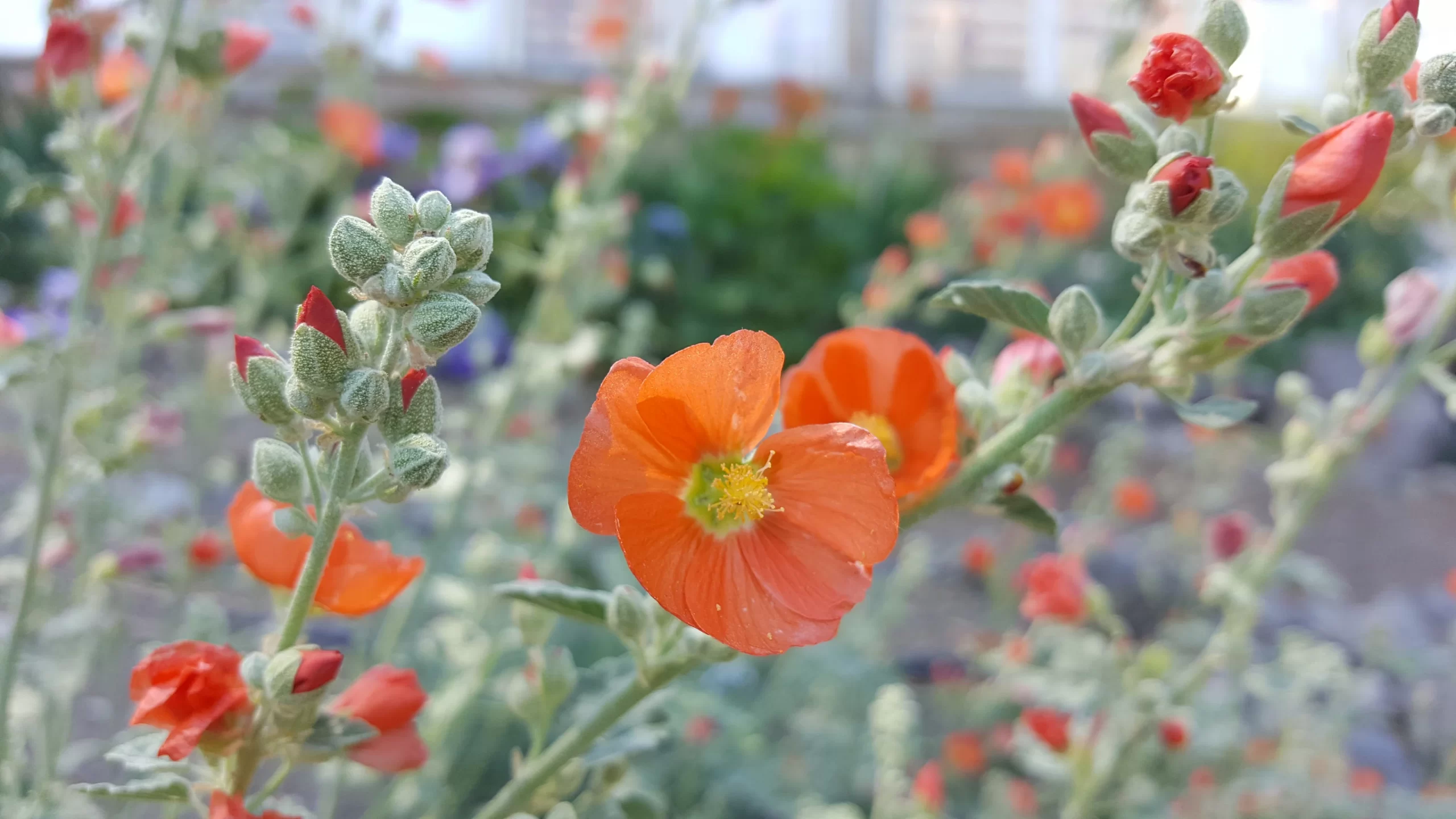It’s July! It’s time to prepare for the dog days of summer, with typically dry conditions, temperatures in the mid 90s or higher, and SUN. Landscapes are often under the unique stress of Utah’s hottest season, so you’ll begin to see what your landscape choices are really capable of.
And now might be the time to consider plants that are already well suited for our Utah conditions – NATIVE PLANTS! Millcreek Gardens has created a new native and xeric plant department to better serve our guests, chock full of true Utah natives, natives from the greater Intermountain West and Great Basin, and a few non-natives that have proven themselves nicely drought tolerant.
But why consider native plants in the first place?
- WATER CONSERVATION: Conserving water is certainly a top priority for any landscape in Utah, the second driest state in the country. BUT THIS DOESN’T MEAN YOU STOP WATERING, nor does it mean ROCKSCAPING. Instead, the key to sustainable water conservation is to keep your soil healthy, because if it is, your plants are healthy as well. Healthy soil absorbs rainwater and irrigation water like a sponge, it sequesters carbon, and it provides habitat for all kinds of beneficial microbes, fungi, and critters. Unhealthy dry soil, especially soil covered in rocks and landscape fabric, will repel water like Gore-Tex, and is essentially devoid of life, exacerbating drought conditions even more.
The first step in building healthy soil is to plant native plants because they have deep root systems to help hold water in place. Ditch the landscape fabric and instead spread a nice, 4 inch thick layer of wood bark mulch to help retain water, keep soil temperatures cooler, prevent soil erosion, and prevent weeds! And remember: drought does not cause bare, dry soil; bare, dry soil causes drought.
- EASE OF MAINTENANCE: Native plants are much less work to maintain than traditional garden plants. Natives like to be watered occasionally, and not much else! No more costly fertilizing, professional pruning, watering, and whatnot. Native plants prefer to be neglected (once established of course) and are perfect for the busy gardener with other landscape priorities.
- SUPPORT LOCAL WILDLIFE: Trying to support bees? Sure, you could get a beehive, but remember that hives are for foreign, imported European honeybees! Honeybees are crucial to our food crop industry, but they are far from the only bees out there. In fact, Utah is home to over 900 native bee species, all of them living a solitary life far different than our typical conception of a busy bee colony. Planting native flowers will help to support these native bees, which still play a major role in pollination, just like their European cousins. Native bees do not nest in hives; they are not gregarious, but solitary, so by planting food for native bees, you help to support their food and habitat. Remember: we humans cannot go it alone, we need all the creatures we live with, no matter how great or small. There are no islands in the web of life!
- UNIQUE LOCAL LOOKS: While it’s true, native plantings might not look like a busy English garden or a manicured French estate, but including them in your landscape design will better ground your native look with the local ecology. Native and other drought tolerant plants feature surprisingly beautiful blooms, interesting foliage (blues and slate grays), and unique textures.
Planting native plants has always been a solid idea, but now it’s even easier since we’ve added a whole new department to make shopping easier and more efficient!



